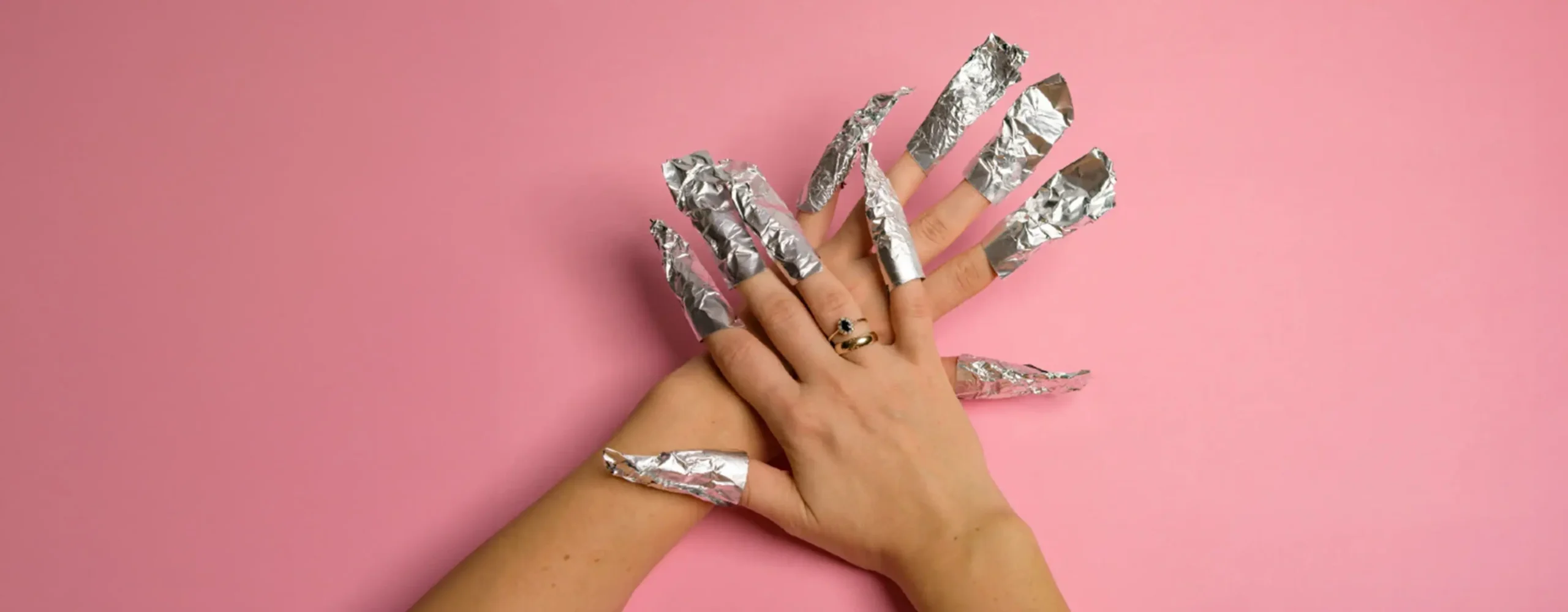
Acrylic nails—a big nod, especially when you have no patience to grow your nails. Despite that, there will be times when you want to try something different. Usually, a visit to the salon is a safe option. But what if you are a big homie who does not like to step out of their cozy home?
Removing acrylic nails at home is a big task in itself. On top of that, imagine doing so without acetone—another task, right? Whether due to skin sensitivity, the harsh smell, or concern for nail health, finding an acetone-free removal method is a priority for many beauty enthusiasts. We understand its significance. Thus, we are here to help, so read and become an expert yourself.
What is Acetone?

Acetone is a colorless, volatile, flammable liquid. It’s most commonly used as a solvent in everything from paint thinner to nail polish remover. In nail care, acetone is prized for its efficiency in quickly breaking down and dissolving the adhesives that bond acrylic nails to natural nails.
Why Use Acetone?

Acetone is widely used for acrylic nail removal because of its effectiveness. It significantly speeds up the removal process, making it a go-to choice for professional salons and home use. However, its strength is also its drawback; it can dry the skin and nails and irritate sensitive skin.
Artificial Nails: Explore Your Options

Before exploring acetone-free removal methods, it’s beneficial to understand the various types of artificial nails you could get for your next mani-pedi session.
- Acrylic False Nails: A combination of a liquid monomer and a powder polymer that’s a hard protective layer over the natural nail.
- Gel False Nails: These require curing under UV light and offer a glossier finish than acrylics.
- Press-On False Nails: Pre-shaped nails that are glued onto the natural nail.
- Nail Wraps: Thin pieces of material (often vinyl) that are pressed onto the nail.
- Shellac: A fusion of nail polish and gel that necessitates UV light for curing.
How to Remove Acrylic Nails Without Acetone

Thankfully, if you’re looking to avoid acetone, several methods exist to safely and effectively remove your acrylic nails, such as:
- Non-Acetone Nail Polish and False Nail Remover
Non-acetone nail polish removers contain ethyl acetate or methyl ethyl ketone as their active ingredient. These chemicals are less harsh than acetone but can still break down the adhesive binding your acrylic nails. The process may take longer, but it’s gentler on your skin and nails. - Hot, Soapy Water
This method is as simple as it sounds. Warm water can help loosen the glue holding the acrylic nails in place. Start by soaking your nails in hot, soapy water for 30 minutes. This should soften the acrylic enough to wedge them gently off. Use an orange stick to lift the edges gently, but don’t force it—if they don’t come off quickly, soak them a bit longer. - Cuticle Oil
Cuticle oil can work wonders in loosening acrylic nails. The oil seeps into the edges and helps to dissolve the glue. For optimal nail care, gently apply cuticle oil around the edges of your acrylic nails and beneath any lifted areas. Wait a few minutes, then see if you can gently push the acrylic nails off. Repeat as necessary, but remember, patience is vital. - Nail File
Using a nail file to eliminate acrylic from your nails delicately demands patience and precision to prevent harming the natural nail. Begin with a coarse file to eliminate surface layers, then transition to a finer one as you approach the natural nail. Remember to pause periodically and monitor your progress to prevent excessive filing depth. - Combine All Four Steps
For the most effective removal, combine all the above steps. Start by soaking your nails in hot, soapy water, then apply cuticle oil. Use the nail file to remove the softened acrylic gradually, and if necessary, use a non-acetone nail polish remover for any stubborn areas. This combination method is gentle on your nails and skin while effectively removing the acrylic.
Removing acrylic nails at home without acetone is entirely possible. Following the abovementioned methods, you can achieve clean, healthy nails ready for your next manicure. For a gentle, acetone-free removal process, practice patience and handle with care to preserve the health of your natural nails.
Whether you’re giving your nails a break or preparing them for their subsequent transformation, removing acrylics properly will ensure your nails remain strong and healthy. In the arena of DIY nail care, knowledge is power. By understanding the alternatives to acetone, you can make the best choices for your nail health and beauty routine.




